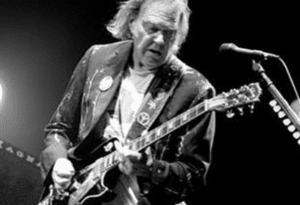Eddie Vedder Shares His Favorite Tom Wait Album

via Fine Folk Music / Youtube
Eddie Vedder, a name synonymous with the 90s grunge revolution, is a rock legend and singer-songwriter whose versatile talents have cast an enduring shadow over rock music.
As the charismatic frontman of Pearl Jam, Vedder’s gruff and powerful voice and their song’s moving lyrics have resonated with countless fans across the globe.
Yet, beneath the layers of his iconic grunge persona lies a deep appreciation for the eclectic and often experimental sounds of Tom Waits, a musical influence that has shaped Vedder’s own artistry in profound ways.
“I like the fact that you can’t really categorize this music,” Vedder told Greg Milner during a 2003 interview with Spin magazine. The grunge legend cited Waits as a major musical influence, picking out the cult icon’s 1975 album Nighthawks at the Diner as a favorite.
Tom Waits, Los Angeles, “Nighthawks” photo by Norman Seeff, 1975. pic.twitter.com/Pke736eS2s
— Mark Farina (@djmarkfarina) September 30, 2022
Vedder’s admiration for Tom Waits
“I want to come up with a Tom Waits-ish line about Tom Waits: ‘Tom Waits for no man’,” The Pearl Jam frontman shared.
Vedder said that, although Waits prided himself on “making good background music”, when one dissects or even tries to play the beloved weirdo’s music, they will realize the genius behind the man.
“They sound like they’re morphing, and the result sounds like an old car that needs a tune-up. You end up with all these sounds that create rhythm, and it’s the perfect bed for a voice,” Vedder added.
The rock singer also named eleven other albums that moved him, helping him and Pearl Jam’s music evolve. Vedder has come a long way from being a part-timer at a gas station to a grunge powerhouse, and these albums were his guiding stars.
‘Our influences are who we are’
Milner wrote how Vedder took quite some time to list his influences, and the latter even hesitated to reveal them, afraid that “it might demystify everything”.
Vedder pondered: “Our influences are who we are. It’s rare that anything is an absolutely pure vision; even Daniel Johnston sounds like the Beatles. And that’s the problem with the bands I’m always asked about, the ones derivative of the early Seattle sound. They don’t dilute their influences enough.”
Seeing the eclectic list of his favorite albums, it was clear that Vedder had a fondness for artists who chiseled away their own seats in the music pantheon, ranging from Motown sensations Jackson 5 to indie innovator Jim O’Rourke. And, of course, there’s the ever-present Beatles on his list (The White Album has to be on every rockstar’s list, right?).
Vedder’s list of records that have moved him the most are: Jackson 5, Third Album (1970); The Beatles, The White Album (1968); The Who, Tommy (1969); Ramones, Road To Ruin (1978); Talking Heads, More Songs About Buildings and Food (1978); Various Artists, Music and Rhythm (1982); Sonic Youth, Daydream Nation (1988); Jim O’Rourke, Insignificance (2001); Fugazi, 13 Songs (1989); Soundgarden, Screaming Life/FOPP (1987); Mudhoney, Mudhoney (1989); Tom Waits, Nighthawks at the Diner (1975); and Pixies, Surfer Rosa (1988).
Eddie Vedder – Pearl Jam pic.twitter.com/i0CgKRDnPA
— QRP – Quarter Rock Press (@QRPoficial) October 1, 2023
From gas station to grunge legend
Vedder’s journey as a musician began with Pearl Jam’s meteoric rise to fame, thanks to their breakthrough album Ten, released in 1991. His distinctive baritone voice and emotive songwriting became the heartbeat of a generation searching for authenticity in music.
But before all of that, Vedder juggled a part-time job at a gas station to fuel his insatiable passion for music during the 1980s. His introduction to the stage started as a guest contributor to Chris Cornell’s band, Temple of the Dog, an experience that ignited Vedder’s undeniable affinity for performing.
Having forged strong connections with various individuals within the band, most notably the future Pearl Jam member Mike McCready, Vedder eventually received an invitation to join the group, and as the saying goes, the rest is history.













